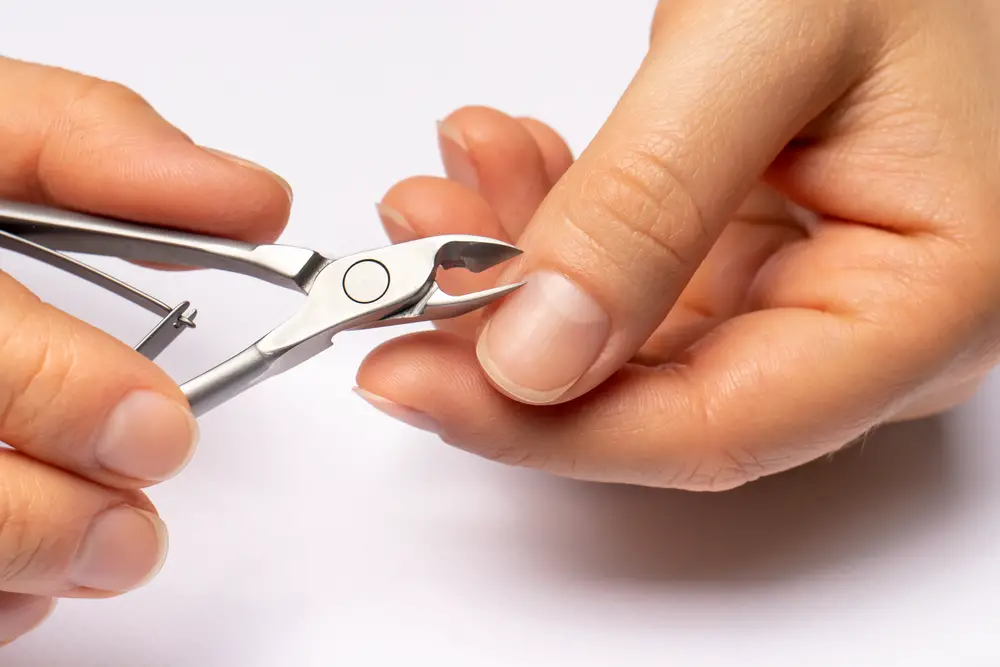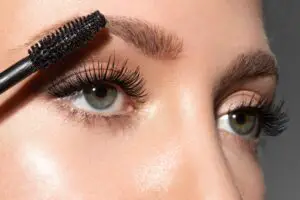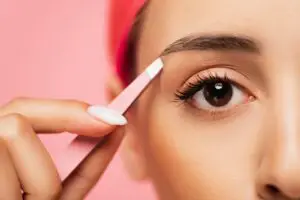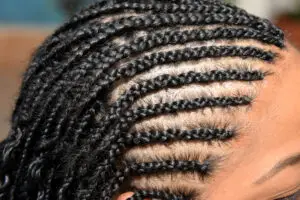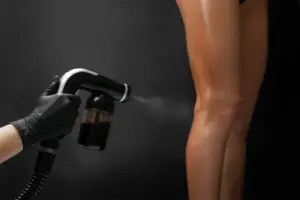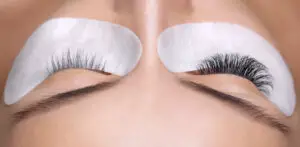Cuticle nippers are a crucial grooming tool for maintaining healthy nails and cuticles. Over time, these nippers can become dull and less effective.
Fortunately, there’s a way to bring them back to life by sharpening them and restoring their cutting edge.
It’s essential to know how to sharpen cuticle nippers properly so that you can get the best results for your nail care routine.
There are various methods available for sharpening cuticle nippers, including manual techniques and using specialised equipment.
Each method offers its benefits and drawbacks, so it’s essential to choose the one that works best for your personal preferences and available tools.
The most important aspect is ensuring the nippers are sharp enough to cut cleanly and smoothly, avoiding any tearing or damage to the cuticles.
Some popular techniques for sharpening cuticle nippers include using sandpaper for grazing the nipper’s edge until the desired sharpness is achieved, or employing a Dremel tool with a metal bit for more precise sharpening.
Regardless of the method chosen, it’s vital to clean the cuticle nippers and, if necessary, apply lubricating oil before beginning the sharpening process. This ensures optimal results and helps maintain the longevity of your cuticle nippers.
Understanding Cuticle Nippers
Material and Design
Cuticle nippers are specially designed tools used in manicure and pedicure sessions for trimming and maintaining cuticles. They are usually made from high-quality stainless steel, ensuring durability and resistance to rust.
The cutting edges of the nippers are sharpened to provide precise cuts without causing any damage to the surrounding skin.
The design of cuticle nippers often resembles a pair of scissors, with a spring-loaded mechanism that allows for easy opening and closing of the blades.
Some models come with a locking mechanism to keep the blades secure when not in use. The handles of the nippers may vary in shape and size to provide a comfortable grip for the user.
Common Issues
There are a few common issues that can arise when using cuticle nippers, one of which is a weak grip. A weak grip may cause a lack of control, resulting in uneven or imprecise cuts.
To ensure a strong grip, it is essential to choose a nipper with ergonomically designed handles that fit comfortably in your hand. Regular maintenance can also help to address this issue, as it involves cleaning and lubrication to keep the tool functioning optimally.
Dull cutting edges is another common problem faced by users of cuticle nippers. A dull nipper may struggle to provide a clean cut, leading to tears or damage to the cuticle.
Sharpening the cutting edges is crucial for optimal performance.
There are various methods to sharpen cuticle nippers, including using a sharpening stone or professional sharpening services.
A related issue is the quality of the material used in making the nail clipper. Poor quality materials may lead to rusting or a shorter lifespan for the nipper.
Opting for cuticle nippers made from high-grade stainless steel ensures that you have a reliable and long-lasting tool.
Why Sharpening Cuticle Nippers is Necessary
Importance of Sharp Tools
The sharpness of your cuticle nippers is crucial for maintaining healthy nails and achieving the desired results in your manicures and pedicures.
Using sharp tools ensures that each cut is clean, precise, and accurate, making the whole process more comfortable and efficient.
Sharpening cuticle nippers increases their lifespan and saves you money in the long run, as you won’t have to replace them as frequently.
Having sharp tools also minimises the risk of infections and ingrown nails. A clean cut makes it easier to remove dead skin and hangnails without causing damage to the surrounding skin.
Sharp nippers also allow for closer cuts, enabling you to shape your nails with ease and maintain their overall health.
Risks of Dull Tools
Using dull cuticle nippers can lead to several issues, such as discomfort, jagged cuts, and potential nail damage. Since dull tools require more force to make a cut, they can cause unnecessary stress on your nails, leading to splits and cracks.
Moreover, dull nippers increase the likelihood of infections and ingrown nails. When cuts are not clean and precise, they can leave behind tiny fragments of skin or nail that could lead to bacterial infections.
Dull tools may also cause uneven cuts, which can result in painful ingrown nails over time.
In summary, keeping your cuticle nippers sharp is an essential aspect of proper nail care. Not only does it ensure precision and efficiency, but it also significantly reduces the risks associated with using dull tools, such as discomfort, jagged cuts, infections, and ingrown nails.
Checking the Condition of Your Cuticle Nippers
Recognising Dullness
Before attempting to sharpen your cuticle nippers, it is essential to assess their condition. Dull nippers can cause discomfort and difficulty in trimming nails.
To check the sharpness, try cutting through paper or plastic film. If the nippers are sharp enough, they will leave a smooth cut without tearing.
Visually inspect the cutting edge for any signs of wear or damage.
When handling the tool, the user should feel a firm and precise grip to ensure that the cuticle nippers are still in good condition.
Identifying Mechanical Malfunctions
While dullness is one factor to consider, mechanical malfunctions of your cuticle nippers should not be overlooked. Some common issues include rusting, loosening of screws, and worn-out springs.
To check for rust, examine the surface of your nippers for any discolouration, pitting, or flaking, especially on the metal parts.
Inspect the screws holding the nipper components together for any signs of loosening or damage. Make certain that they can be tightened securely and move smoothly.
Finally, assess the condition of the springs that help control the opening and closing action of your cuticle nippers. Weak or deformed springs can lead to poor performance and may require replacement.
By being vigilant about the maintenance of your cuticle nippers, you can ensure they remain in optimal condition for effective nail care.
Manual Sharpening Techniques
Using a Sharpening Stone
One popular technique for sharpening cuticle nippers is by using a sharpening stone. First, hold the cuticle nipper securely and at a consistent angle on the stone. Apply light pressure while moving the nipper across the stone’s surface in a back and forth motion.
Ensure that both sides of the blade come into contact with the stone for even sharpening. Remember, precision and maintaining a consistent angle is crucial for achieving sharp, clean edges.
Using Sandpaper
Another approach to manually sharpen cuticle nippers is by using sandpaper. Start with a high grit sandpaper (1200 grit or higher) and fold it to create a firm surface.
Hold the cuticle nipper firmly and slide the blade over the sandpaper, applying light pressure. Be sure to maintain a consistent angle and sharpen both sides of the blade to achieve optimal results.
Using a Diamond File
A diamond file can also be effective in sharpening cuticle nippers. Its fine grit and durable material make it an ideal tool for this purpose. Hold the diamond file securely and place the edge of the cuticle nipper’s blade against the file.
Use controlled back and forth strokes, applying moderate pressure to effectively grind the blade, ensuring a sharp edge. Remember, the key to success with a diamond file is precision and maintaining the appropriate angle.
Using Tin Foil
Lastly, you may try sharpening cuticle nippers using tin foil. Cut a piece of tin foil about 20cm in length, fold it several times to create a thick, yet pliable strip.
Hold the cuticle nipper securely and place the edge of the blade against the folded tin foil. Slide the blade along the foil, applying light pressure until the edge is sharp. This technique is not as precise as the others, but it can be useful for a quick touch-up.
Mechanical Sharpening Techniques
Using a Dremel
A Dremel is a versatile tool that can be used for sharpening cuticle nippers effectively. To begin the sharpening process, first remove the operating lever and ensure that the nippers are clean. Hold the jaws in place while using the Dremel to sharpen the cutting edges with gentle, precise movements.
It’s essential to apply consistent, light pressure to avoid accidentally damaging the blades.
Remember to work cautiously, sharpening one blade at a time, to achieve the desired sharpness.
Using a Whetstone
Sharpening cuticle nippers with a whetstone is another effective mechanical sharpening method. Before starting, gather the necessary materials, including a sharpening stone and lubricating oil (optional).
Clean your cuticle cutters thoroughly and ensure that they are dry before proceeding.
Lubricate the whetstone if needed and lay it on a flat, stable surface. Gently hold the cuticle nippers at the desired angle against the stone and slide the blade along its surface, taking care not to apply too much pressure.
Repeat this process for each cutting edge of the nippers, and wipe the blades clean with a soft cloth or towel.
Proper Care and Maintenance
Cleaning and Disinfecting
To maintain the hygiene and effectiveness of your cuticle nippers, regular cleaning and disinfection are necessary. After each use, clean the nippers with soap and water to remove any debris. Then, immerse them in a suitable disinfectant solution to eliminate any potential infections.
Make sure to follow the manufacturer’s guidelines for the recommended disinfection time.
Lubrication and Protection
Prolong the life and sharpness of your cuticle nippers by lubricating them with a few drops of mineral oil. Apply the oil on the joint and hinges, then open and close the nippers several times to ensure smooth operation.
Lubrication prevents rust and wear, which could result in improper cutting and potential damage to the cuticle. Wipe off any excess oil with a soft cloth before use.
Storage
Proper storage of your cuticle nippers is essential for maintaining their quality and preventing damage. Keep them in a protective case to avoid contact with other metal tools and surfaces that could dull or damage the blades.
Store the case in a dry environment, away from moisture, to prevent rust and corrosion. By following these care and maintenance tips, you can ensure optimal performance and longevity of your cuticle nippers while maintaining a high level of hygiene during nail care treatments.
Safety Measures in Sharpening
Handling Sharp Objects
When sharpening cuticle nippers, it is essential to handle sharp objects with care. Always ensure that you have a firm grip on the nippers to prevent accidental slips while sharpening.
Remember to hold the sharpening tool securely as well, to minimise the risk of injury. Keep your fingers clear of the cutting edge of the nippers during the sharpening process, and avoid applying excessive pressure to reduce the risk of accidents.
When you finish sharpening, be sure to store the cuticle nippers and the sharpening tool in a safe and secure location.
Using Protective Equipment
To further enhance safety while sharpening cuticle nippers, it is important to use appropriate protective equipment. Wearing safety goggles can protect your eyes from any debris or shards generated during the sharpening process.
Additionally, consider wearing gloves to shield your hands from potential cuts or injuries. Prioritise working in a well-lit and stable environment, so you can have clear visibility of the tools and a solid working surface.
Lastly, make sure you are familiar with the proper techniques for sharpening cuticle nippers, to ensure your safety and the effectiveness of the sharpening process.
Post-Sharpening Steps
Checking Sharpness
After sharpening your cuticle nippers, it’s crucial to check their sharpness. You can do this by testing them on a piece of polyethylene or a small, inconspicuous area on your own cuticle.
The nipper should glide smoothly and easily without pulling or scratching the cuticle. If your cuticle nippers are made from medical stainless steel, they should maintain their sharpness for a longer period of time providing you’ve sharpened them correctly.
Remember that sharp and well-maintained nippers are essential for achieving a clean and precise cut during your nail care routine.
Trimming Cuticles
Once you’re satisfied with the sharpness of your cuticle nippers, it’s time to use them for trimming your cuticles. Begin by softening the cuticle area with warm water or a cuticle-softening product.
Gently push back the softened cuticles using a cuticle pusher or an orange stick, being careful not to damage the nail bed.
Now, use your sharpened cuticle nippers to trim any excess skin or hangnails around the nails. Hold the nipper at a slight angle, ensuring a clean and accurate cut.
Make sure to trim only the dead skin or cuticle, as cutting into living tissue may cause pain and increase the risk of infection.
Once you’ve completed trimming your cuticles, apply a nourishing cuticle oil to the area and massage it in to promote healthy nail growth and keep the cuticle area soft and moisturised.
By following these steps and regularly maintaining the sharpness of your cuticle nippers, you can achieve professional results and elevate your nail care routine.
Frequently Asked Questions
Many individuals who own cuticle nippers often wonder how to keep their tools sharp and in excellent working condition. This section aims to clarify some of the most common questions regarding the sharpening of cuticle nippers.
Can I sharpen my cuticle nippers at home?
Yes, you can sharpen your cuticle nippers at home with the proper tools and techniques. A sharpening stone is commonly used for this purpose. Other materials such as lubricating oil and a soft cloth may also be needed to ensure a smooth and clean sharpening process.
How much pressure should I apply while sharpening my cuticle nippers?
When using a sharpening stone or honing stone, it’s essential to apply moderate pressure. Press the blade gently against the stone’s surface while maintaining the natural angle of the blade. Excessive pressure may cause damage to the blade and reduce its efficiency.
Do I need magnified images to sharpen my cuticle nippers properly?
While magnified images can help provide a closer look at the blade, they are not necessary to achieve proper sharpening. By focusing on the blade’s angle and maintaining consistent pressure, you can successfully sharpen cuticle nippers without magnified images.
How often should I sharpen my cuticle nippers?
The frequency of sharpening cuticle nippers depends on how often they are used and the wear they receive. Keep an eye on your cuticle nippers’ performance and sharpen them when you notice any decline in their ability to cut cleanly and precisely.
Are there any specific techniques to sharpen cuticle nippers?
Yes, there are particular techniques to follow when sharpening cuticle nippers. Gradually move the blade of the nipper along the sharpening stone in smooth, even strokes. Be sure to maintain the blade’s original angle during this process.
Additionally, remember to clean the cuticle nippers before and after sharpening to remove any debris or remaining particles.
By adhering to these guidelines and employing proper tools, maintaining the sharpness of your cuticle nippers will become a straightforward and effective task, ensuring that they remain in top working condition for an extended time.

I’m Jennifer a beauty and wellness expert. I believe in promoting a sustainable and healthy lifestyle from within. Helping people feel good is my passion; whether it’s teaching yoga or offering skincare advice.

